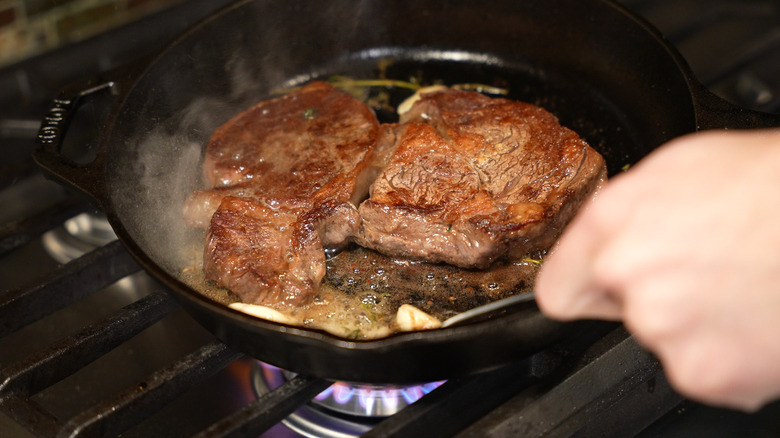
Searing is the cornerstone of culinary excellence when it comes to preparing meats. This technique creates a visually stunning, caramelized crust and enhances the flavour through the Maillard reaction. In this chemical process, proteins and sugars react under high heat. Chef Abdul, a culinary expert passionate about mastering classic techniques, says, “Searing meat is about controlling heat and embracing patience. Done right, it turns a good dish into an unforgettable one.”
Here’s your comprehensive guide to searing meats for maximum flavour, ensuring every bite is as delicious as it looks.
Step-by-Step Guide to Perfectly Sear Meat
Searing works best with certain cuts that benefit from caramelisation.
Chef Abdul’s Tip: “Searing is as much about preparation as technique. A dry, room-temperature piece of meat will always sear better.”
Chef Abdul’s Insight: “Investing in a good-quality cast iron skillet is one of the best decisions for home cooks who want consistent results.”
Chef Abdul’s Tip: “Seasoning generously is key. Salt not only enhances flavour but also aids in forming that perfect crust.”
Chef Abdul’s Tip: “If the meat sticks when you flip it, it’s not ready. Wait until it naturally releases from the pan.”
Internal Temperatures for Perfect Doneness
Use a meat thermometer to ensure accuracy:
Pro Tips for Maximum Flavor
Chef Abdul’s Tip: “Butter basting adds layers of flavour, while resting ensures every bite is juicy and satisfying.”
Common Searing Mistakes to Avoid
Chef Abdul’s Insight: “Patience is key. Rushing the process results in a lacklustre crust and uneven flavour development.”
“Searing is more than browning meat—it’s about building flavour and creating texture,” Chef Abdul explains. “With the right technique and attention to detail, anyone can achieve a beautifully seared piece of meat that transforms a meal.”
Mastering these techniques and tips can help you create perfectly seared meats with a gorgeous crust and tender interior. Searing brings out the best in your ingredients, whether chicken thighs, lamb chops, or even a vegetarian steak. So, fire up your pan and let the sizzle begin!
What’s your go-to meat or protein to sear? Share your favourites in the comments below.
Chef Abdul © Copyright 2024. All rights reserved.